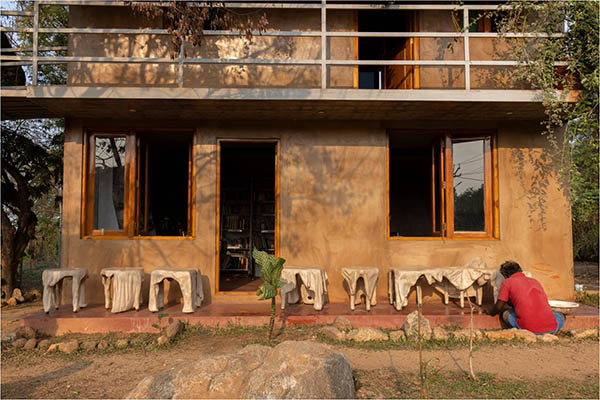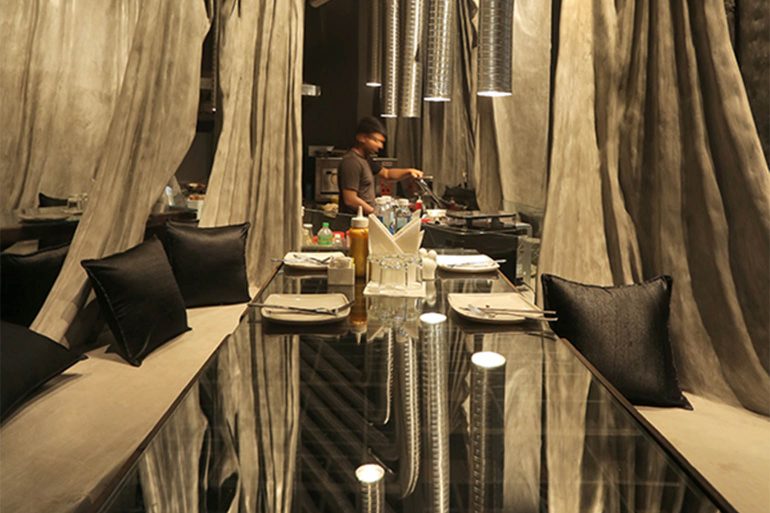Kerala-based architect Vinu Daniel is known for his use of local and sustainable materials. In his latest series, Daniel shares his visions through sculptures made of “clothcrete” — a term for his experiments with waste cloth and concrete. His works from the series are exhibited in London’s Barbican Center, in their summer exhibition. The exhibition titled Our Time on Earth strives to find answers to the climate emergency through art, design, science, music and philosophy.

Through the years 2018 to 2021, Kerala witnessed abnormally high rainfall and devastating floods, resulting in heavy loss to resources and livelihoods. Many experts have stated these to be signs of oncoming climate change. The award-winning Keralan architect chose to narrate the plight of the Chendamangalam weavers of the state through his works. Daniel revived their damaged and worn fabric, otherwise worth ₹45 lakh to create a pavilion at the exhibition. The cloth was first dipped in lime and then draped over chairs, stools and screens to create interactive elements for the exhibit space. The resulting “clothcrete” is further reinforced with glass fibre and plastered with a mix of lime and soil. For a soft sheen, the material is sanded and polished using coconut husk.

“My sculptures were created using the damaged cloth to remind ourselves of the destruction wrought by climate change on the lives of people,” says Daniel, Principal Architect and Founder of Wallmakers. The composition of “clothcrete” was arrived at after rigorous iterative experimentation. The concept first met the public eye at Tease Me Cafe, a 695 square foot restaurant renovation project in Kerala.

The material was used to create 1 inch wafer-thin solid partitions, scooping out ample private spaces within the small area. “Reusing discarded cloth to create aesthetically appealing spaces is a step towards adopting an eco-friendly strategy, away from the conventional brick-and-mortar approach,” he says. The architect is also working on a museum project in Chennai, investigating recycled tires as a building material.

Our Time on Earth presents 18 works from 12 countries, each under three interconnected sections—Belong, Imagine and Engage. Daniel’s exhibit is shown under the latter theme. The “clothcrete” sculptures are being exhibited alongside 10 screens featuring ‘Stories of Change’ — a series of video interviews featuring voices from the global south inspiring communal activism and environmentalist initiatives. Our Time on Earth will be exhibited at the Barbican Center from 5th May to 29th August, after which it will travel across the world for three to five years.
***

